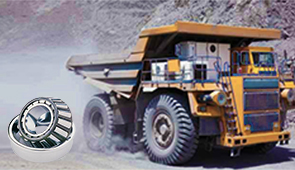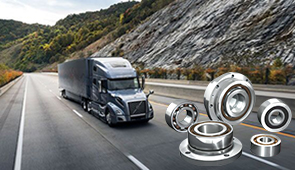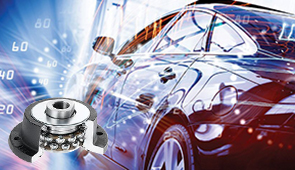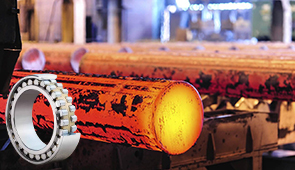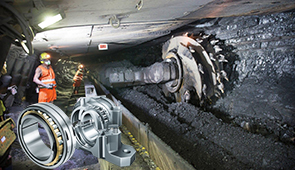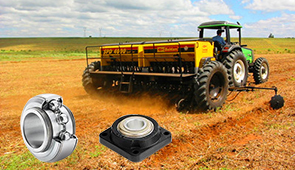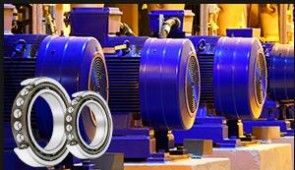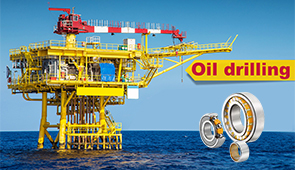Oil Seals for Heavy Vehicles: Understanding Their Importance and Functionality
Oil seals, often referred to as shaft seals or rotary seals, are critical components in the performance and longevity of heavy vehicles. These unassuming yet highly engineered parts play a pivotal role in preventing the leakage of lubricants and the intrusion of contaminants, ensuring that engines, transmissions, and axles operate efficiently under demanding conditions. Without proper oil seals, the complex machinery of heavy vehicles would face increased wear and tear, leading to costly repairs and unexpected downtime. This article explores the significance of oil seals in heavy vehicles, detailing their functionality, types, and the challenges they address in industrial and transportation applications. Whether you’re a fleet manager, an engineer, or simply a heavy vehicle enthusiast, understanding the critical role of oil seals can help improve vehicle reliability and maintenance practices.
Introduction to Oil Seals
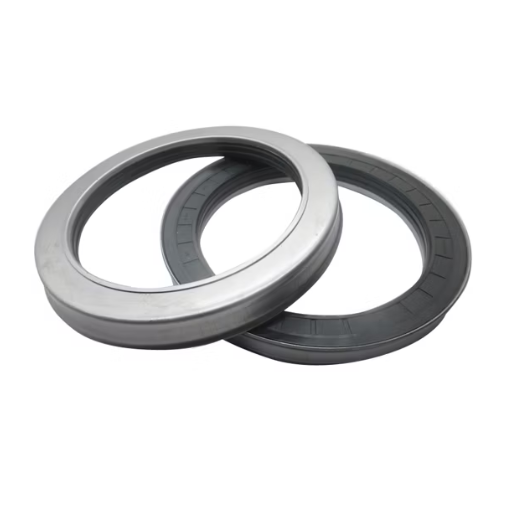
What are Oil Seals?
Commonly called oil seals are shaft seals or rotary seals, the formation of a barrier is very important for basic functions, such as keeping lubricant from leaking away or avoiding contaminants such as dirt, dust, or moisture from entering machinery. Mainly, they help in securely sealing between the stationary and moving components in mechanical systems such as shafts, bearings, and housings. Oil seals also help to maintain a controlled environment inside machines, thereby increasing efficiency and life expectancy.
These seals are mostly manufactured using materials such as rubber, polyurethane, or a combination of elastomers and metal to provide flexibility and durability in adverse conditions. They are configured for different speeds of rotation, temperatures, and the very conditions that prevail in heavy vehicles and industrial machinery. The spring-wound type guarantees constant pressure on the shaft inside, thus enabling the oil seal to perform even better with time.
Oil seals are there to keep any internal wear from contamination. Absent of any oil seals, the respective well-mate components would be subjected to foreign particles and fluid leakage, thereby causing high maintenance costs and even equipment failure. By keeping a barrier between moving parts and their surrounding environment, oil seals enhance not just reliability but also the safety and efficiency of mechanical systems. Engineering and maintaining heavy vehicles and industrial equipment have their foundation laid by these prime sealing components.
Key Functions of Oil Seals in Heavy Vehicles
Oil seals are an essential part of the mechanical installation in heavy vehicles, ensuring their operational integrity and performance. Lubricants are prevented from leaking by the seals to keep essential components well lubricated, such as bearings and shafts. Thus, by containing lubrication within the system, the oil seals allow parts to move smoothly while keeping friction and wear down, thereby increasing the service life of these parts.
The other operational aspect of oil seals is to provide environmental exclusion to foreign matter like dust, dirt, moisture, and other particles that the environment throws at them. Such foreign agents accelerate wear and tear or cause corrosion and premature failure if allowed into mechanical systems. Oil seals thus allow a controlled atmospheric condition for the internals, thus facilitating better reliability of heavy vehicles working under severe conditions.
Oil seals also create safety and efficiency for heavy vehicles. Any slight compromise in sealing integrity can cause operational problems like overheating, pressure imbalance, or fluid contamination, which can either constrain or cause breakdowns in execution. Oil seals thus become indispensable components of heavy vehicle design and maintenance for the proper regulation of lubrication and external exclusion.
Common Applications of Oil Seals in Trucks
Oil seals serve an important function in several truck system components, which optimizes the performance and life span of critical parts. An oft-cited application is in the engine where oil seals keep lubrication oil from escaping the crankcase while blocking contaminants such as dirt and debris from entering it. This incorporates engine efficiency and reduces the risk of internal surface wearing due to impurities.
In addition, oil seals also maintain truck transmission systems by preventing the transmission fluids from leaking out so that the gears can work smoothly on correct lubrication so as not to heat up and wear out with friction. Likewise, oil seals are commonly applied in wheel hubs and axle systems to trap grease within the bearings and block out water or particles to help maintain the structural strength and functional efficiency of these components.
Then, oil seals are used in heavy truck brake systems, and integrated into calipers and other hydraulic components to avoid hydraulic fluid leakage. This maintains pressure in the system, thereby allowing reliable and consistent braking operation. These applications of oil seals in vital systems help to improve operational reliability, reduce downtime, and better maintenance intervals-a critical aspect of trucking operations.
Types of Oil Seals
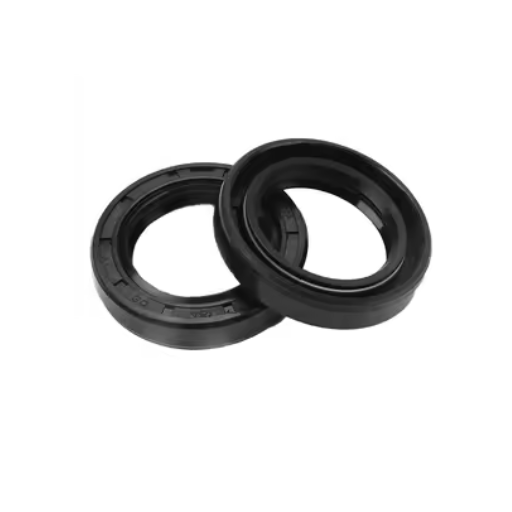
Wheel Hub Oil Seals
Wheel hub oil seals are vital in providing for the smooth working and operative duration of the wheel assemblies in heavy-duty trucks and other vehicles. These seals were made to keep out grime, dust, water, and other contaminants while simultaneously keeping the lubricant intact inside the wheel hub. By repelling contaminants and keeping lubrication in, the seal helps in reducing friction and wear of wheel parts like bearings. Therefore, such maintenance increases bearing life. Modern wheel hub oil seals are made to withstand extreme working conditions such as high rotational speeds, heavy loads, and fluctuating temperatures; hence, they are an indispensable component in the automobile and trucking industry.
Wheel hub oil seals are often made with a combination of advanced elastomeric materials and metals for reinforcement. The elastomeric sealing lips are precisely shaped to maintain dynamic sealing even when the parts are in constant motion and thermal expansion occurs. Some are even configured with a labyrinth seal or multiple sealing lips for greater sealing effect in harsh environments. Over time, manufacturers have added PTFE sealing elements that outperform with respect to heat, chemical, and wear resistance; thus, these sealing components have become even more reliable. These advances make sure that the wheel hub oil seals function well even in adverse environments, thereby minimizing the consequences of premature component failure.
Studies in fleet maintenance show nearly 30% of unplanned downtime related to wheel-end failures can be attributed to bad seals. The financial implications of being negligent of these components could be huge with opportunity costs borne directly as repair costs and delays in operational efficiency coupled with safety hazards. Alternative wheel hub oil seal inspection and sealing should be a reliabilist approach in the fleet to avoid excessive expenses and ensure safety standards. With modern automated production technology coupled with improved materials, sealing cycles have become faster, giving assurance that the seals will be cost-effective and perform at their best.
Axle Oil Seals
Axle oil seals play the heavy-duty role of maintaining high efficiency in the systems of the vehicle, driving caused by the sealing of lubricant leakage from and keeping contaminants, such as dirt, moisture, and debris, from entering the axle assembly. These are highly engineered seals that work under high pressure, extreme temperature, and continuous rotational friction that is usually present in the axle environment. They may include the latest elastomeric materials or low-friction coatings for improved sealing efficiency and thus extended service life.
With manufacturing techniques improving day by day, multi-lip and labyrinth designs have been introduced in the market to increase the efficiency of the seal in handling high-stress operational conditions and to reduce the wear factor. For instance, dynamic seals designed with reinforced construction can maintain structural integrity during their use in high-speed applications, which means more tears will be minimized in maintenance costs and downtimes. Modern axle oil seals are also tested to all-too-stringent industry standards, including exacting axial load testing, thermal cycling, and fluid compatibility analysis, so they are guaranteed to survive under any number of operational scenarios.
It is established that the backing of new material technologies like hydrogenated nitrile butadiene rubber (HNBR) and polytetrafluoroethylene (PTFE) has increased resistance significantly toward thermochemical degradation. Under these circumstances, seals remain operative, considering prolonged exposure to synthetic lubricants and temperature extremes. By utilizing these technologies, manufacturers and fleet managers can provide enhancements to durability, operational efficiency, and cost management around vehicular systems.
Shaft Oil Seals
Shaft oil seals or radial oil seals are technical sealing tools blocking lubricants from leaking out of machines while simultaneously barring contamination of the system by particles such as dirt, dust, or moisture. These seals find usage in all kinds of rotating equipment, with internal gaskets considered insofar as internal lubrication is fair against wear and tear on its components.
Making real use of modern materials technology, shaft oil seals are fashioned from FKM and HNBR to resist high-temperature conditions, chemical attacks, and abrasive environments. The properties of these materials permit the seal to withstand application pressures in both dynamic and static conditions, ranging from 0.5 MPa to 3 MPa.
Structurally, the shaft oil seal basically has three parts: a flexible sealing lip, a rigid metal case, and a spring integrated into the assembly. The sealing lip is in contact radially with the shaft, whilst the case maintains the stability dimensions of the seal along with the interface. In addition, the tension spring assures the pressure at the sealing interface remains constant, especially when control speeds approach 20 m/s in high-speed rotation systems.
Further improvements and innovations ensure that the performance of the shaft oil seal can be optimized. The double-lip design provides added protection by separating the functions of lubricant retention and contaminant exclusion. These improvements mean longer maintenance intervals for the seals, reduced operation costs, and high reliability demanded by industries in automotive, aerospace, and heavy machinery.
Manufacturing Processes of Oil Seals
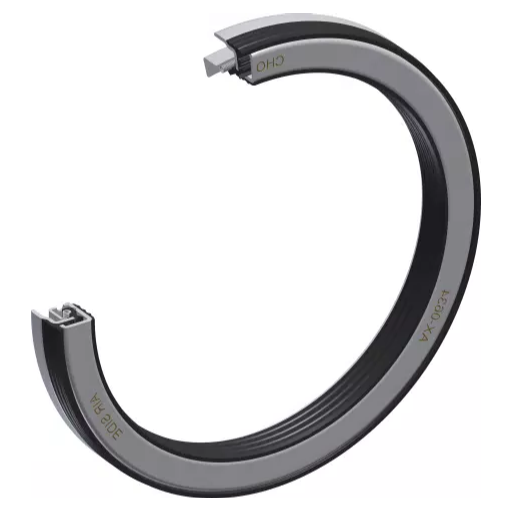
Materials Used in Oil Seal Production
The varying performance and durability of oil seals depend largely on the materials used for their manufacture, as does their resistance to hostile environments while in use. Some of the commonly used materials include:
- Nitrile Butadiene Rubber (NBR): Known to have excellent resistance to petroleum-based oils and fuels, NBR is one of the most commonly used materials for oil seals. It is considered standard for industrial applications, which are usually within a temperature range of -40°F to 250°F (-40°C to 121°C).
- Fluoroelastomer (FKM): This material is used for applications requiring high-temperature resistance, typically up to 400°F (204°C). It also has exceptional resistance to chemicals, synthetic lubricants, and aggressive fuels, making it suitable for industries like automotive and aerospace.
- Polytetrafluoroethylene (PTFE, Teflon): PTFE-based seals are present under extreme conditions given their excellent chemical resistance, lowest coefficient of friction among all, and ability to withstand temperature ranges up to 500°F (260°C). These properties make PTFE well-adapted for high-level applications including heavy machinery and specialized equipment.
- Silicone Rubber (VMQ): Silicone has excellent low-temperature flexibility and is thus used in applications where high-temperature extremes are common. These qualities make the compound resistant to aging and oxidative degradation, which contributes to its reliability in dynamic sealing applications.
- Polyacrylate Rubber: Common in automotive applications due to its resistance to high temperature and aging, as well as compatibility with automatic transmission fluids.
- Metal components and reinforcement: The flexible sealing element is sometimes reinforced by metallic components such as carbon steel or stainless steel for strength, structural integrity, and abrasion resistance.
Materials are chosen based on the type of operation requiring sealing: temperature range, fluid compatibility, pressure level, and exposure to an environment. More advanced materials and composites keep coming out, promising seal life and performance improvements and able to meet the stringent requirements of today’s industries.
Quality Control and Industry Standards
The least common denominator that may ever undermine reliability and safety lies in quality control of material fabrication and component making. Rigorous testing is thus maintained in every brief stage of production for the detection of defects, tolerance measurement, and according to the standards of the product specification. Non-destructive testing (NDT) becomes the ideal means of assessing component integrity so as not to damage the object, using ultrasonic testing, radiographic inspection, or magnetic particle inspection, among others.
Equally important is the observance of industrial standards to realize compatibility and uniformity in commercial applications. Thus, organizations such as ASTM International, ISO, and ASME pose guidelines covering all aspects-cum-material properties, manufacturing processes, and operations of products. The ASME Boiler and Pressure Vessel Code, for instance, lays down salient requirements concerning pressure-containing components operating under high-stress conditions. Observance of such standards guarantees the integrity of the product and strengthens the conversion of industries across the globe.
Technologies such as automated testing and AI quality monitoring will continue to improve the accuracy of the quality control process. These new methods allow the industry to work toward higher efficiency, safety, and sustainability goals while also reducing the wastage of materials and operational hazards.
Innovations in Oil Seal Technology
Recent advances in oil seal technology have integrated the latest materials and design methods to improve performance in a wide variety of industrial applications. High-performance elastomers such as fluoroelastomers and hydrogenated nitrile butadiene rubber (HNBR) are employed for exceptional resistance to heat, chemicals, and wear. These materials extend the life of oil seals considerably, and dependable service is ensured even in extreme conditions.
Surface-texturing methods such as micro-patterned sealing lips may also be used to boost the hydrodynamic lubrication performance of the seals themselves, thereby reducing friction and wear during operation. This makes the whole set-up more energy-efficient while contributing to the increase in the life of the machine. The use of finite element analysis (FEA) is, indeed, becoming more and more common in the design phase to simulate stresses and optimize seal geometry for a particular application.
Manufacturing advances, such as automated precision molding and laser-based inspection systems, have helped ensure tighter tolerances and fewer defects. Dual-material oil seals represent a great milestone, combining the beneficial features of rigid and flexible components to withstand higher pressures and speeds without compromising sealing effectiveness.
These technological advancements fall in line with the growing emphasis wavelength of sustainable solutions in engineering, whereby maintenance intervals and energy loss are reduced, with concurrent improvements in the reliability of crucial machinery.
Choosing the Right Oil Seals for Heavy Trucks

Factors to Consider When Selecting Oil Seals
When choosing oil seals for heavy-duty trucks, a detailed consideration of different factors must be respected for the highest performance, least downtime, and lowest maintenance costs involved.
- Material Compatibility: The oil seal material needs to be compatible with the operating environment and different oils it will be in contact with, such as engine oils, hydraulic oils, or synthetic lubricants. Commonly used materials are NBR, FKM, and polyacrylate, each offering different resistances to heat, chemicals, and abrasive actions.
- Temperature and Pressure Rating: Heavy trucks have very demanding applications where extremes of heat and pressure are seen frequently. Make sure that the seal can withstand the temperature ranges and differential pressure levels in use without degradation or loss of sealing function.
- Axial and Radial Load Requirements: Take into account the load patterns with which the seal is going to be interfaced. Inappropriate selection may cause the seal to fail prematurely due to wear caused by excessive axial or radial loads or be deformed under such loads.
- Shaft and Bore Surface Finish: The shaft and bore surface finish imparts quite a significant effect on proper sealing. Therefore it becomes necessary that these surfaces conform to certain tolerances and roughness levels for a good seal and to reduce leakage.
- Contaminant Exclusion: In very harsh and dusty working environments, keeping out contaminants from an oil seal is most important, especially in heavy-duty trucks. Look for any design that incorporates an auxiliary lip or any advanced technique of keeping contaminants away.
- Installation Requirements: Installation requirements and ease of installation can absolutely be considered for evaluating these oil seals. A poorly installed oil seal could easily damage either itself or the shaft even before being put into operation and working efficiently. The selection of seals with easier installation or user-friendly designs can save a lot of headaches during replacements.
- OEM Specifications and Standards: Following OEM specifications at least gives an assurance that the seal conforms with the truck design and thus does not pose any warranty or performance issue.
- Cost vs. Performance Balance: Price is always considered; however, more emphasis should be given to long-term reliability and efficiency. Selecting more expensive, good-quality seals will bring greater savings from increased service life and improved performance of the truck.
Once these have been weighed through the chain of decision-making, fleet operators and maintenance professionals can confidently select oil seals that support operational requirements and hence better system reliability with the truck performing at its very best in the working environment.
Comparing Different Oil Seal Types: NBR vs FKM
The former offers a very cost-effective way with oil resistance and moderate temperature tolerance, while the latter does better in chemical, heat, and abrasion resistance at a higher expense.
|
Aspect |
NBR |
FKM |
|---|---|---|
|
Price |
Low |
High |
|
Temp Limits |
-30°C to 120°C |
-20°C to 230°C |
|
Oil Tolerance |
Excellent |
Excellent |
|
Chem Tolerance |
Moderate |
Excellent |
|
Wear Resist. |
Moderate |
High |
|
UV Stability |
Poor |
Excellent |
|
Moisture Resist. |
Good |
Moderate |
|
Longevity |
Moderate |
High |
|
Use Cases |
General |
High-demand |
Understanding High Pressure and Hydraulic Applications
Applications under pressured conditions and hydraulic applications need components that resist extreme conditions in high pressure, temperature variations, and exposure to various Hydraulic fluids. Oil seals are very important to protect the integrity and performance of hydraulic systems. In choosing the seals most appropriate for the design and environment, some important considerations are given below:
- Pressure Resistance: Hydraulic systems can be subjected to conditions of pressure from 1,000 PSI to very high 10,000 PSI and beyond. Oil seals should be capable of resisting these pressures without deformation or undue wear. In extreme loads, high-pressure seals may use reinforced materials or backup rings to avoid extrusion.
- Temperature range: Depending on the operating conditions, hydraulic systems can be exposed to temperatures from -40°F (-40°C) to 250°F (121°C). Materials like FKM or PTFE are usually employed for seals intended for high temperatures, while NBR is suited for moderate temperatures.
- Chemical Resistance: Some hydraulic fluids are mineral oils, synthetic esters, and water glycol solutions. Depending upon the nature of fluids, seals require dissimilar chemical resistance. FKM would resist harsh chemicals better than others; NBR would, by contrast, be excellent in normal oil-based fluids.
- Wear and Abrasion Resistance: Motion within a hydraulic system may expose seals to friction and abrasion. Polyurethane or filled PTFE are usually chosen as high-performance materials to improve life and reduce maintenance.
- Dynamic and Static Sealability: Hydraulic systems tend to operate with both dynamic (moving) and static (stationary) forms of sealing. Dynamic seals are therefore low-friction seals meant to reduce energy losses by heat generation. On the other hand, a static seal should be able to resist fluid loss even though it remains stationary.
Based on this in-depth factor analysis, hydraulics professionals can decide on means to maximize the reliability and working life of hydraulic components working under high-pressure conditions.
Maintaining Oil Seals for Optimal Performance
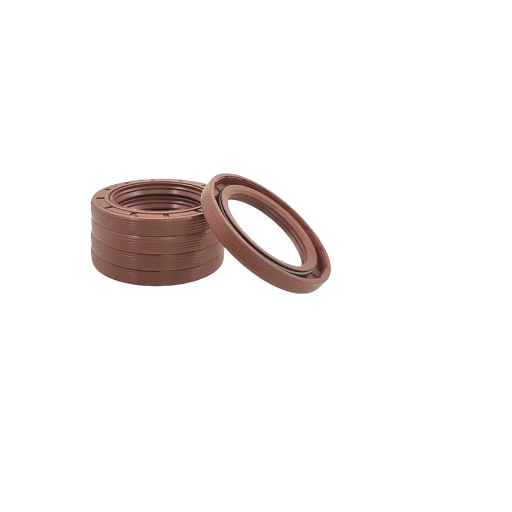
Tips for Extending the Lifespan of Oil Seals
- Ensure Proper Installation: Oil seals must be correctly installed to maximize their working life. Any misalignment or erroneous positioning can cause the seals to wear prematurely or to count as a failure. Using proper installation tools will help prevent damage to the seal while installing, thus ensuring it is properly oriented per the application’s needs.
- Monitor Operating Conditions: Variables such as pressure, temperature, or speed should be kept within acceptable limits that are recommended for the particular seal material and design type. Among many, prolonged contact with extreme conditions may harden, crack, or degrade the seal material, further causing leakage.
- Maintain Lubrication: Adequate lubrication of the surroundings of the oil seal will reduce friction and wear. Use good quality lubricants that are compatible with the seal materials. This will help to maximize seal performance and reduce the generation of heat that could shorten the life of the seal.
- Inspect for Contamination: Solid contaminants in hydraulic fluids or lubricants play a massive role in the wear and tear of oil seals. Accordingly, implement filtration systems and regularly inspect the adjacent environment to keep out dirt, dust, or other contaminants.
- Use Compatible Materials: Design seals from rubber materials that are resistant to the chemicals and oils that they will meet to work with in operation. For example, seals working in contact with synthetic oils might require materials such as FKM (fluorocarbon elastomer) or PTFE (polytetrafluorethylene) to protect against degradation.
- Schedule Regular Maintenance: Being proactive in maintenance through periodic inspections of seals and their reservoirs may help early detection of wear patterns or potential problems. Minor defects addressed earlier will not deprive them of catastrophic failure and will prolong the general service life of the seals.
- Avoid Overloading and Misalignment: Excessive load on mechanical equipment or improper cross-shaft alignment would lead to oil seals being overstressed, thereby causing faster wear. Ensure proper alignment of components and avoid any condition that may inflict uneven forces on the seal.
These procedures enhance the overall reliability and maintain sealing efficiency of oil seals operating in highly demanding environments, given that equipment operators practice such.
Signs of Oil Seal Failure to Watch For
The early detection of oil seal failure ensures to maintenance of the working condition of the equipment and prevents expensive downtime. Some common indicators of oil seal failure include:
- Oil Leaks: Looking for visible leakage of oil from the seal constitutes one of the clearest indicators of failure, perhaps due to wear, damage, or simply poor installation.
- Excessive Contamination: A failing oil seal can be a gateway to contaminants like dirt, water, and debris entering the system. The contamination can degrade the lubricant and damage the internal parts.
- Unusual Noise or Vibration: Where the system gives out an audible noise or a definite vibration in the presence of a damaged seal, the improper lubricant application due to damage should be considered as a source of friction.
- Decrease in Efficiency: A lowering in system performance, in the sense of pressure drop during operation or intermittent operation, is usually an indication of a lubrication problem, which is related to a failing seal.
- Wear of the Surface Around the Seal: Similar symptoms may be present when scoring, grooving, or corrosion is observed upon inspecting the adjacent surface, said poor lubrication retention being one of such inadequate sealing functions.
Through an active maintenance program with inspections based on the above diagnostic symptoms, operators now can intervene in oil seal failures, thereby guaranteeing the ultimate equipment life with minimal unscheduled maintenance downtime.
Repair Kits and Seal Kits for Heavy Vehicles
Repair and seal kits are essential for the reliable functioning of heavy vehicles in industries such as construction, mining, and transportation. O-rings, gaskets, and seals, which form part of these kits, are the necessary requirements for restoring the system integrity or maintaining hydraulic, pneumatic, and drivetrain systems. Seal manufacturing integrates advanced materials like NBR or PTFE to provide resistance to high temperatures, pressures, and corrosive fluids.
Hydraulic cylinder seal kits typically confront fluid leakages or internal pressure loss cases, which greatly lessen working efficiencies in heavy-duty tasks. On the other hand, axle repair kits, preventing failures due to wear and tear, are commonly exposed to extreme loads in heavy vehicle operations. Therefore, a good understanding between the apparatus specifications and those of the repair kit is necessary to achieve the desired sealing.
Modern developments incorporated the pre-assembled custom-fit kits for the specific vehicle model to cut down downtime by allowing faster repairs with fewer part mismatches. Investing in high-quality repair and seal kits will lower lifecycle costs, increase reliability, and safeguard the operability and productivity of heavy vehicles throughout the heavy vehicles’ extended service life.
Frequently Asked Questions (FAQ)
Q: What are oil seals for heavy vehicles?
A: Oil seals for heavy vehicles are crucial components designed to prevent leakage of lubricants and contaminants from critical areas in vehicles, such as the engine crankshaft, gearbox, and truck axle. They ensure optimal performance and longevity of heavy machinery.
Q: How do I choose the right oil seal for my heavy vehicle?
A: To choose the right oil seal, consider application requirements, such as the type of vehicle (Isuzu, for example), the specific location (rear axle, wheel hub seal), and the environment in which the oil seal will operate. Consulting with an oil seal manufacturer or seal suppliers can provide valuable insights.
Q: What is the role of an axle seal?
A: An axle seal prevents lubricant leakage from the axle housing, ensuring that bearings and other internal components are protected from dust and contaminants. This is essential for maintaining the performance of heavy vehicles.
Q: Are there different types of oil seals used in heavy vehicles?
A: Yes, there are various types of oil seals, including radial shaft seals, cassette oil seals, and truck wheel hub oil seals. Each type is designed to address specific sealing needs and application requirements.
Q: What materials are used in manufacturing oil seals?
A: The materials used in oil seal manufacturing must be selected based on the application requirements. Common materials include rubber, metal housing, and plastic, which provide strength to the seal and ensure strong sealing performance.
Q: How can I find a reliable oil seal supplier?
A: To find a reliable oil seal supplier, conduct thorough research on truck oil seals and look for manufacturers with a proven track record in the industry. Reviews and recommendations can also guide you to reputable seal factories.
Q: What factors influence the performance of oil seals?
A: Factors influencing oil seal performance include the sealing element’s design, materials used, and the environment in which the oil seal operates. Ensuring proper installation and maintenance also plays a critical role in the effectiveness of the sealing solutions.
Q: Can I purchase oil seals in wholesale quantities?
A: Yes, many oil seal manufacturers and suppliers offer wholesale options for bulk purchases. This is beneficial for businesses requiring a consistent supply of seals for heavy vehicles, such as those in industrial motors or agricultural machinery sectors.
Q: What is the importance of conducting in-depth research on truck oil seals?
A: Conducting in-depth research on truck oil seals allows manufacturers and suppliers to understand market needs, product details, and technological advancements. This knowledge helps in developing high-quality oil seals that meet the demands of the automotive industry.
UCTH213-40J-300 with Setscrew(inch)
CNSORDERNO: Normal-duty(2)
TOGN: UCTH213-40J-300
SDI: B-R1/8
SD: 2 1/2
UCTH212-39J-300 with Setscrew(inch)
CNSORDERNO: Normal-duty(2)
TOGN: UCTH212-39J-300
SDI: B-R1/8
SD: 2 7/16
UCTH212-38J-300 with Setscrew(inch)
CNSORDERNO: Normal-duty(2)
TOGN: UCTH212-38J-300
SDI: B-R1/8
SD: 2 3/8
UCTH212-36J-300 with Setscrew(inch)
CNSORDERNO: Normal-duty(2)
TOGN: UCTH212-36J-300
SDI: B-R1/8
SD: 2 1/4
UCTH211-35J-300 with Setscrew(inch)
CNSORDERNO: Normal-duty(2)
TOGN: UCTH211-35J-300
SDI: B-R1/8
SD: 2 3/16
UCTH211-34J-300 with Setscrew(inch)
CNSORDERNO: Normal-duty(2)
TOGN: UCTH211-34J-300
SDI: B-R1/8
SD: 2 1/8









